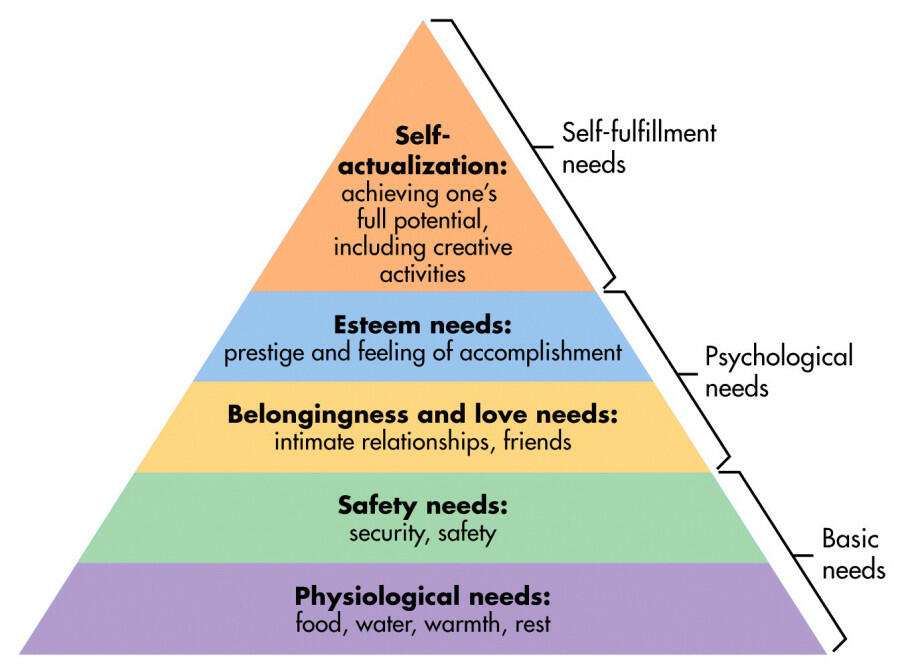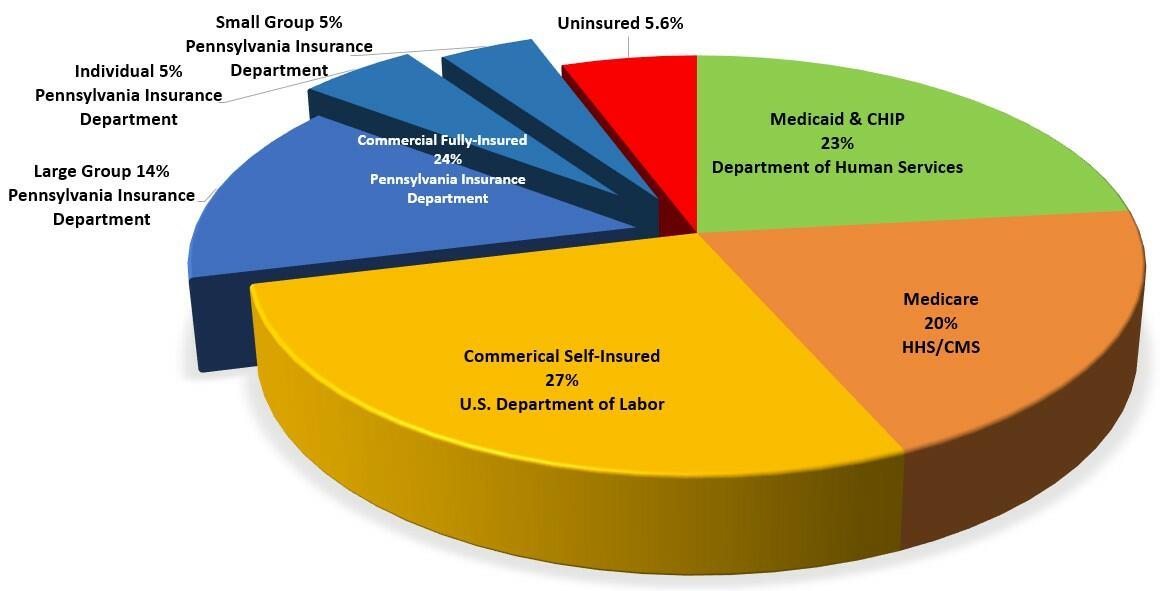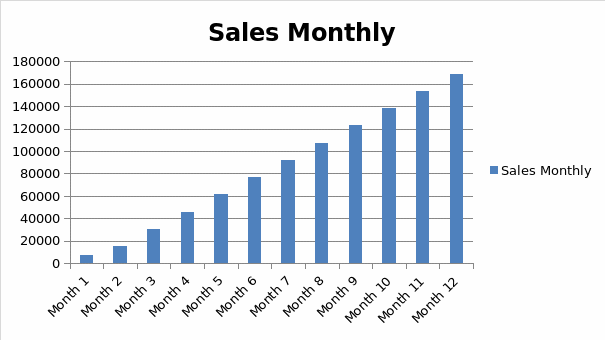Executive Summary
Tactical Rabbit is a new business venture that plans to offer home health care and community-based services for elderly people aged 65 years and above in Pennsylvania. The market research conducted by the firm’s agent shows that although there are other healthcare facilities in this state offering similar services, an opportunity exists that can be tapped by this new entity. The population of senior citizens in the state is growing rapidly, and the majority of them prefer home health services to nursing homes. Tactical Rabbit is planning to have a joint business venture with M&Y CARE, LLC Home Health Services to ensure that they offer premium healthcare services to the targeted clients in this market.
Business Plan for Home Health Agency
Background
Life expectancy in the United States has increased significantly over the past few decades because of improved healthcare services and economic growth. It means that the population of the elderly is increasing. According to Howe et al., recent statistics show that the country’s population of senior citizens aged 65 years and above is 46 million people, which represents 15% of the total population (45). The study projects that the population will increase to over 98 million people (24% of the total population) by the year 2060. As the population of the elderly continues to increase, the demand for home healthcare and community-based services will surge. In the past, it was common for the elderly to be taken to nursing homes where they would get most of the services they would need. However, that trend is changing as the majority of the population is economically empowered. Studies show that senior citizens currently prefer getting home healthcare services instead of being confined in nursing homes (Tasker et al. 23). Many states also consider home health care and community-based services less costly compared with nursing homes. In this project, the focus is to develop a business plan for Tactical Rabbit that is planning to open a new home health business in the state of Pennsylvania.
About Tactical Rabbit
Tactical Rabbit is a new healthcare services company that has its headquarters in Pittsburg, Pennsylvania. The firm seeks to offer home health care and community-based services in the state of Pennsylvania. The director of the company has identified an appropriate office for the firm from where all activities will be coordinated. The firm is at the advanced stages of registration, having obtained most of the documents that it would need to legalize its services in the state. The table in Appendix 1 provides the milestones achieved towards the legalization of this business. The management of this company has made a decision to collaborate with M&Y CARE, LLC Home Health Services, which is a firm that offers similar services in Ohio, Michigan, and Florida. The new company will benefit from the experience of its partner to ensure that it offers high-quality goods to customers in the market. The goal of this firm is to become the preferred social services agency for the elderly in the state of Pennsylvania. Figure 1 below shows some of the home health services that the staff will be offering to the patients.

Marketing Analysis Plan
Pennsylvania is the fifth most populous state in the United States of America, with estimations showing that over 12,800,000 living within its borders (Greenhalgh et al. 395). The statistics also show that the population growth rate of the elderly (residents aged 65 years and above) was 20 times that of the state’s general population, which was an increase of 16.3% from 2010 to 2017 (Tasker et al. 88). Currently, it is estimated that 2.27 million residents of this state are aged 65 years or older. The improved standards of living, healthcare services, and security mean that this population is going to increase significantly in the coming decades. The majority of these people prefer getting home health care and community-based services instead of being confined in nursing homes, which many people view as a form of incarceration. Despite the existence of rival firms offering similar services, the size of the market is growing and success can only be determined by the ability of a company to deliver quality services that meet or exceed expectations of customers.
Primary Target Market
Tactical Rabbit and its partner, M&Y CARE, LLC Home Health Services, primarily targets senior citizens aged 65 years and above who are living Pennsylvania. It means that this new firm will be targeting about 2.27 million people, a population that is consistently growing in this state. Services will only be available for those who are interested in home healthcare and community-based services instead of being in nursing homes. As Tasker et al. observe, the majority of these senior citizens currently prefer getting home health care services in their retirement homes where they are close or constantly in contact with their family members (39).
Needs Assessment
When planning to penetrate a new market, one of the factors that one has to consider is the assessment of customer needs. Howe et al. explain that needs assessment helps a firm to plan on the right product that it should deliver, the manner in which it should be delivered, and the appropriate market proposition (76). Maslow’s hierarchy of needs shown in figure 2 below can help in understanding these needs and planning on how to meet them.

As shown in the above figure, psychological needs are at the base of the pyramid, and have to be met for an individual to survive. In this case, Tactical Rabbit has to provide basic healthcare services needed by these patients. They include managing the impaired immune system, eliminating or significantly reducing the risk of infections, attending to patients’ wounds, managing side effects of treatment, addressing depression among patients, improving their memory loss, and the general improvement of their quality of life. It is important to understand the safety needs of these elderly patients. For the nursing team to meet these expectations, they will ensure that there is proper administration of medication, fire and electrical hazards are eliminated and that bathtubs are safe for use by these clients. Daily visits at clients’ homes may help to determine potential risk factors.
These patients also have social needs that should be addressed by the employees of this institution. Nurses would help clients to visit their friends or engage in social activities in the society. Involvement in positive social conversation, as shown in figure 3 below, may also offer therapeutic benefits to the patient. Meeting esteem needs will focus on promoting their self-confidence by helping them to be active players in their community’s social events. They need to feel respected and loved in society instead of being viewed as a social burden. They should also be allowed to take an active role in their medication, instead of them having to be given the medication. These patients would be assisted to achieve self-actualization needs by allowing them to be as independent as possible and to be part of social events in their community. Such activities and constant interaction with their peers would help address the problem of loneliness.

Product Positioning
The positioning of a product in a new market is critical because it defines the perceived value of what a firm offers based on the communication released. As a healthcare service provider that targets the elderly, product positioning should emphasize comfort, limited pain, and happiness, as Tasker et al. observe the three are the main concerns that they often have (41). They should be convinced that services offered by Tactical Rabbit would fight pain, improve their comfort, and enhance happiness.
Competitors’ Analysis
Competition in this market is increasingly getting stiff as new firms emerge and existing ones expand their product line. Greenhalgh et al. explain that many nursing homes and private hospitals are introducing home health care services as a means of expanding their market share and overcoming stiff competition within the industry (399). Geisinger Health System, with branches in central and northeast Pennsylvania, and the University of Pittsburgh Medical Center are the dominant players in the market (Wereta et al. 364). They have a strong market brand, a good reputation for offering quality services to their clients, and operate in different parts of the state. This new company will have to develop unique marketing strategies to compete favorably against these market rivals.
Market Size and Opportunity Gap
Pennsylvania has one of the highest populations of senior citizens, estimated to be over 2.27 million people. The number is projected to exceed more than 3 million people by the end of 2025 (Tasker et al. 73). The high population of those who have medical insurance cover makes the market even more attractive. As shown in figure 4 below, the common covers include Medicare, commercial self-insured, Pennsylvania Insurance Department, and Medicaid & CHIP. Only 5.6% of the population lacks insurance cover in this state, and the majority of them are illegal immigrants aged below 50 years holding blue-collar jobs (Howe et al. 89). The gap has been identified in terms of the services offered to the elderly. Greenhalgh et al. explain that most of these elderly citizens are looking for happiness as they struggle with loneliness (401). This firm will offer conventional medical services and additional benefits meant to address unhappiness among its clients.

SWOT Analysis
The market analysis plan should also focus on determining strengths, weaknesses, opportunities, and threats that the firm will face once it commences operations. The main strength of this firm is flexibility. As a small entity that is just starting to operate in the market, Tactical Rabbit can easily adapt to the current market trends. However, its main weakness is its limited experience in this industry. The growing population in the state, enhanced technology and preferences for community-based services are the main opportunities in the market. This company will have to deal with the threat of stiff competition and strict government regulatory policies.
Strategy
Tactical Rabbit needs an effective strategy that would enable it to achieve success. The strategy can be analyzed from different perspectives. However, the researcher will focus on the 4Ps of the marketing mix and the first element is the product. The new healthcare firm will be offering a broad range of home nursing services such as caring for wounds, grooming, bathing, enhancing patients’ safety, facilitating their involvement in community events, and organizing get together. Given that pricing does not influence the buying decision of patients as most of them use their insurance cover, this firm will charge premium prices for premium products. The proposed reimbursement per hour will be $ 16. The place factor will be the respective homes of the clients. The firm will use various promotional platforms, especially the mass media (television commercials and newspaper adverts) to promote the brand. Outdoor adverts such as the use of billboards, shown in figure 5 below, can also be effective in strengthening the brand and products of the new firm.

Personnel Plan
The ability of this new business venture to achieve success in the market depends on the employees it hires. The management has developed a human resource management plan to help ensure that highly skilled healthcare officers are recruited to undertake various activities. As shown in Appendix 2 below, the firm will have to hire an administrator, clinical director, field nurses, home health aides, and physical therapists. The table below shows a comprehensive compensation plan for the personnel in each of the five fields.
Sales Forecast
The market analysis has identified different challenges in the market that this firm will have to overcome. However, the projections show that if the management of Tactical Rabbit takes necessary measures to meet customers’ needs, the company will experience an increase in sales for the first 12 months of operations. The consistent growth in sales, shown in figure 5 below, reflects the expected increase in the number of clients that this company will serve. The management appreciates that new market forces may have an impact on projected sales.

Project’s Principal Benefits
When looking at the principal benefits of this project, the focus will be on the customer instead of the financial gains that the company would get if its operations are successful. The following are the main benefits that this company promises its clients in the market.
- Highly trained and experienced caregivers who understand the needs of the elderly;
- Personal relationship and a friendship bond created by ensuring that a specific nurse attends to a specific patient;
- Customized services offered to customers based on their specific needs;
- Ability to interact with family members, friends, and participate in communal activities;
- Immediate response and coordination with the best local hospitals in cases of emergency.
Risk Factors
The management of this new business venture will have to monitor various risks to ensure that its operations are not interrupted. Wereta et al. (364) note that understanding the potential risks in the market makes it easy to come up with a relevant intervention plan. The following risk factors will be monitored closely:
- Impractical or unnecessarily complicated marketing plan for market acquisition;
- The limited technical capacity needed to facilitate virtual coordination of the nurses’ activities;
- New federal, state, or county legislation, which may affect normal operations;
- The emergence of new firms in the market offering the same products.
Works Cited
Greenhalgh, Trisha, et al. “Achieving Research Impact through Co‐creation in Community‐Based Health Services: Literature Review and Case Study.” The Milbank Quarterly, vol. 94, no. 2, 2016, pp. 392-429.
Howe, Brenda, et al. The Gerontology Nurse’s Guide to the Community-Based Health Network. Springer Publishing Company, 2015
Tasker, Diane, et al., editors. Community-based Healthcare: The Search for Mindful Dialogues. Sense Publishers, 2017.
Wereta, Tewabech, et al. “Effects of a Participatory Community Quality Improvement Strategy on Improving Household and Provider Health Care Behaviors and Practices: A Propensity Score Analysis.” BMC Pregnancy and Childbirth, vol. 18, no. 1, 2018, pp. 364-375.